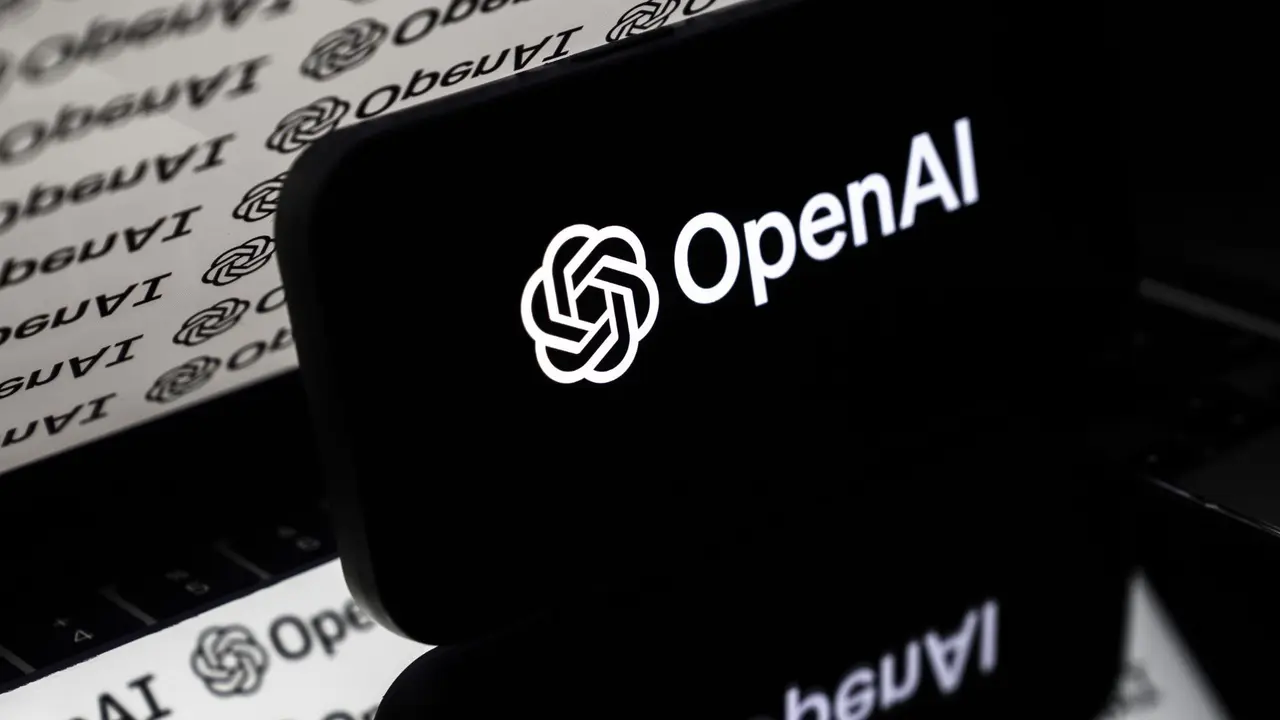Kaspersky's 2025 Ransomware Report Reveals AI-Driven Threats and Regional Vulnerabilities
2 Sources
2 Sources
[1]
Kaspersky Releases 2025 Ransomware Report Ahead of Anti-Ransomware Day
The Commonwealth of Independent States sees a smaller share of users encountering ransomware attacks. However, hacktivist groups such as Head Mare, Twelve and others active in the region often use ransomware such as LockBit 3.0 to inflict damage on target organizations. Manufacturing, government and retail sectors are the most targeted, with varying levels of cybersecurity maturity across the region affecting security. Europe is consistently targeted with ransomware but benefits from robust cybersecurity frameworks and regulations that deter some attackers. Sectors such as manufacturing, agriculture, and education are often targeted, but mature incident response and awareness limit the scale of attacks. The region's diversified economies and strong defenses make it less of a focal point for ransomware groups than regions with rapid, less secure digital growth. Current and emerging ransomware trends AI tools were increasingly used in ransomware development, as demonstrated by FunkSec, a ransomware group that emerged in late 2024 and quickly gained notoriety by surpassing established groups like Cl0p and RansomHub with multiple victims claimed in December alone. Operating under a Ransomware-as-a-Service (RaaS) model, FunkSec employs double extortion tactics -- combining data encryption with exfiltration -- targeting sectors such as government, technology, finance, and education in Europe and Asia. The group's heavy reliance on AI-assisted tools sets it apart, with its ransomware featuring AI-generated code, complete with flawless comments, likely produced by Large Language Models (LLMs) to enhance development and evade detection. Unlike typical ransomware groups demanding millions, FunkSec adopts a high-volume, low-cost approach with unusually low ransom demands, further highlighting its innovative use of AI to streamline operations. The RaaS (Ransomware-as-a-Service) model remains the predominant framework for ransomware attacks, fueling their proliferation by lowering the technical barrier for cybercriminals. In 2024, RaaS platforms like RansomHub thrived by offering malware, technical support and affiliate programs that split the ransom. This model enables less-skilled actors to execute sophisticated attacks, contributing to the emergence of multiple new ransomware groups in 2024 alone.
[2]
Kaspersky State of Ransomware Report-2025: Global and Regional Insights for International Anti-Ransomware Day
With International Anti-Ransomware Day approaching on May 12, Kaspersky presents its annual report on the evolving global and regional ransomware cyberthreat landscape. The purpose of Anti-Ransomware Day is to raise global awareness about the threats posed by ransomware and to promote best practices for prevention and response. According to Kaspersky Security Network data, the Middle East, APAC and African regions are leading by the share of users attacked by ransomware, with Latin America, CIS (Commonwealth of Independent States) and Europe trailing behind. Globally from 2023 to 2024 the share of users affected by ransomware attacks increased to 0.44% by 0.02 p.p. [V1] The seemingly small percentage is typical for ransomware and is explained by the fact that attackers often don't distribute this type of malware on a mass scale, but prioritize high-value targets, which reduces the overall number of incidents. Share of users whose computers were attacked by crypto-ransomware, by region Data from Kaspersky Security Network In the Middle East and Asia-Pacific regions, ransomware affected a higher share of users due to rapid digital transformation, expanding attack surfaces and varying levels of cybersecurity maturity. Enterprises in APAC were heavily targeted, driven by attacks on infrastructure and operational technology, especially in countries with growing economies and new data privacy laws. Ransomware is less prevalent in Africa due to lower levels of digitization and economic constraints, which reduce the number of high-value targets. However, as countries like South Africa and Nigeria expand their digital economies, ransomware attacks are on the rise, particularly in the manufacturing, financial and government sectors. Limited cybersecurity awareness and resources leave many organizations vulnerable, though the smaller attack surface means the region remains behind global hotspots.[V2] Latin America also experiences ransomware attacks, particularly in Brazil, Argentina, Chile and Mexico. Manufacturing, government, and agriculture, as well as critical sectors such as energy and retail are targeted, but economic constraints and smaller ransoms deter some attackers. Despite this, the region's growing digital adoption is increasing exposure. [V3] The Commonwealth of Independent States sees a smaller share of users encountering ransomware attacks. However, hacktivist groups such as Head Mare, Twelve and others active in the region often use ransomware such as LockBit 3.0 to inflict damage on target organizations. Manufacturing, government and retail sectors are the most targeted, with varying levels of cybersecurity maturity across the region affecting security. Europe is consistently targeted with ransomware but benefits from robust cybersecurity frameworks and regulations that deter some attackers. Sectors such as manufacturing, agriculture, and education are often targeted, but mature incident response and awareness limit the scale of attacks. The region's diversified economies and strong defenses make it less of a focal point for ransomware groups than regions with rapid, less secure digital growth.[V4] Current and emerging ransomware trends AI tools were increasingly used in ransomware development, as demonstrated by FunkSec, a ransomware group that emerged in late 2024 and quickly gained notoriety by surpassing established groups like Cl0p and RansomHub with multiple victims claimed in December alone. Operating under a Ransomware-as-a-Service (RaaS) model, FunkSec employs double extortion tactics -- combining data encryption with exfiltration -- targeting sectors such as government, technology, finance, and education in Europe and Asia. The group's heavy reliance on AI-assisted tools sets it apart, with its ransomware featuring AI-generated code, complete with flawless comments, likely produced by Large Language Models (LLMs) to enhance development and evade detection. Unlike typical ransomware groups demanding millions, FunkSec adopts a high-volume, low-cost approach with unusually low ransom demands, further highlighting its innovative use of AI to streamline operations. The RaaS (Ransomware-as-a-Service) model remains the predominant framework for ransomware attacks, fueling their proliferation by lowering the technical barrier for cybercriminals. In 2024, RaaS platforms like RansomHub thrived by offering malware, technical support and affiliate programs that split the ransom. This model enables less-skilled actors to execute sophisticated attacks, contributing to the emergence of multiple new ransomware groups in 2024 alone. In 2025, ransomware is expected to evolve by exploiting unconventional vulnerabilities, as demonstrated by the Akira gang's use of a webcam to bypass endpoint detection and response systems and infiltrate internal networks. Attackers are likely to increasingly target overlooked entry points like IoT devices, smart appliances or misconfigured hardware in the workplace, capitalizing on the expanding attack surface created by interconnected systems. As organizations strengthen traditional defenses, cybercriminals will refine their tactics, focusing on stealthy reconnaissance and lateral movement within networks to deploy ransomware with greater precision, making it harder for defenders to detect and respond in time. The proliferation of LLMs tailored for cybercrime will further amplify ransomware's reach and impact. LLMs marketed on the dark web lower the technical barrier to creating malicious code, phishing campaigns and social engineering attacks, allowing even less skilled actors to craft highly convincing lures or automate ransomware deployment. As more innovative concepts such as RPA (Robotic Process Automation) and LowCode, which provide an intuitive, visual, AI-assisted drag-and-drop interface for rapid software development, are quickly adopted by software developers, we can expect ransomware developers to use these tools to automate their attacks as well as new code development, making the threat of ransomware even more prevalent. "Ransomware is one of the most pressing cybersecurity threats facing organizations today, with attackers targeting businesses of all sizes and across every region. In our report we highlight that there is a concerning shift toward exploiting overlooked entry points -- including IoT devices, smart appliances, and misconfigured or outdated workplace hardware. These weak spots often go unmonitored, making them prime targets for cybercriminals. To stay secure, organizations need a layered defense: up-to-date systems, network segmentation, real-time monitoring, robust backups, and continuous user education. Building cyber awareness at every level is just as important as investing in the right technology," comments Dmitry Galov, Head of Research Center for Russia and CIS at Kaspersky's GReAT. [V5] Read the report on Securelist.com for the more information about ransomware trends in 2025. On Anti-Ransomware Day and beyond, Kaspersky encourages organizations to follow these best practices to safeguard from ransomware: Enable ransomware protection for all endpoints. There is a free Kaspersky Anti-Ransomware Tool for Businessthat shields computers and servers from ransomware and other types of malware, prevents exploits and is compatible with already installed security solutions. Always keep software updated on all the devices you use to prevent attackers from exploiting vulnerabilities and infiltrating your network. Focus your defense strategy on detecting lateral movements and data exfiltration to the internet. Pay special attention to outgoing traffic to detect cybercriminals' connections to your network. Set up offline backups that intruders cannot tamper with. Make sure you can access them quickly when needed or in an emergency. Install anti-APT and EDR solutions, enabling capabilities for advanced threat discovery and detection, investigation and timely remediation of incidents. Provide your SOC team with access to the latest threat intelligence and regularly upskill them with professional training. All of the above is available within Kaspersky Expert Security framework. Use the latest Threat Intelligenceinformation to stay aware of the actual Tactics, Techniques, and Procedures (TTPs) used by threat actors. To protect the company against a wide range of threats, use solutions from Kaspersky Nextproduct line that provide real-time protection, threat visibility, investigation and response capabilities of EDR and XDR for organizations of any size and industry. Depending on your current needs and available resources, you can choose the most relevant product tier and easily migrate to another one if your cybersecurity requirements are changing.
Share
Share
Copy Link
Kaspersky's latest report highlights the evolving ransomware landscape, including the rise of AI-powered attacks, regional vulnerabilities, and emerging trends in cybercrime tactics.

Global Ransomware Landscape
Kaspersky's 2025 Ransomware Report, released ahead of International Anti-Ransomware Day on May 12, provides crucial insights into the evolving cyberthreat landscape. The report reveals that the share of users affected by ransomware attacks globally increased by 0.1% from 2023 to 2024
1
. While this percentage may seem small, it reflects the targeted nature of ransomware attacks, which often focus on high-value targets rather than mass distribution.Regional Vulnerabilities
The Middle East, Asia-Pacific (APAC), and African regions lead in the share of users attacked by ransomware, followed by Latin America, the Commonwealth of Independent States (CIS), and Europe
2
. This distribution is attributed to varying levels of digital transformation, cybersecurity maturity, and economic factors across regions.In APAC, rapid digital transformation and expanding attack surfaces have made enterprises prime targets, particularly in countries with growing economies and new data privacy laws
2
. Africa, despite lower overall digitization, is seeing an increase in ransomware attacks, especially in South Africa and Nigeria, targeting manufacturing, financial, and government sectors2
.Emerging Threats and Trends
AI-Powered Ransomware
The report highlights the increasing use of AI tools in ransomware development. A notable example is FunkSec, a ransomware group that emerged in late 2024 and quickly gained notoriety
1
. FunkSec's operations showcase:- Use of AI-generated code with flawless comments, likely produced by Large Language Models (LLMs)
- Double extortion tactics combining data encryption and exfiltration
- Targeting of government, technology, finance, and education sectors in Europe and Asia
- A high-volume, low-cost approach with unusually low ransom demands
Ransomware-as-a-Service (RaaS) Model
The RaaS model continues to dominate the ransomware landscape, lowering the technical barrier for cybercriminals
1
. In 2024, platforms like RansomHub thrived by offering malware, technical support, and affiliate programs, enabling less-skilled actors to execute sophisticated attacks1
.Related Stories
Future Projections
Looking ahead to 2025, Kaspersky anticipates several developments in ransomware tactics:
- Exploitation of unconventional vulnerabilities, such as using webcams to bypass endpoint detection systems
2
- Increased targeting of IoT devices and smart appliances
2
- Refined tactics focusing on stealthy reconnaissance and lateral movement within networks
2
- Proliferation of LLMs tailored for cybercrime, further lowering the technical barrier for creating malicious code and phishing campaigns
2
Regional Cybersecurity Landscape
The CIS region sees a smaller share of ransomware attacks, but faces threats from hacktivist groups like Head Mare and Twelve, which often use ransomware such as LockBit 3.0
1
. Manufacturing, government, and retail sectors are the most targeted in this region1
.Europe, while consistently targeted, benefits from robust cybersecurity frameworks and regulations that deter some attackers
1
. Sectors such as manufacturing, agriculture, and education are often targeted, but mature incident response and awareness limit the scale of attacks1
.As ransomware threats continue to evolve, the report underscores the importance of global awareness and the implementation of best practices for prevention and response across all regions and sectors.
References
Summarized by
Navi
Related Stories
Acronis Cyberthreats Report H1 2024: Alarming Surge in Email Attacks and AI-Driven Threats
31 Jul 2024

Ransomware Threat Landscape Evolves: 30% Increase in Active Groups and AI's Growing Role in Cybercrime
08 Oct 2024•Technology

India Faces Escalating Cybersecurity Challenges: Trend Micro and Zscaler Reports Highlight Ransomware and Malware Threats
15 Oct 2024•Technology

Recent Highlights
1
AI Chatbots Sway Voters More Effectively Than Traditional Political Ads, New Studies Reveal
Science and Research

2
Trump signs executive order to override state AI laws despite bipartisan pushback
Policy and Regulation

3
OpenAI warns upcoming AI models will likely pose high cybersecurity risk with zero-day exploits
Technology





